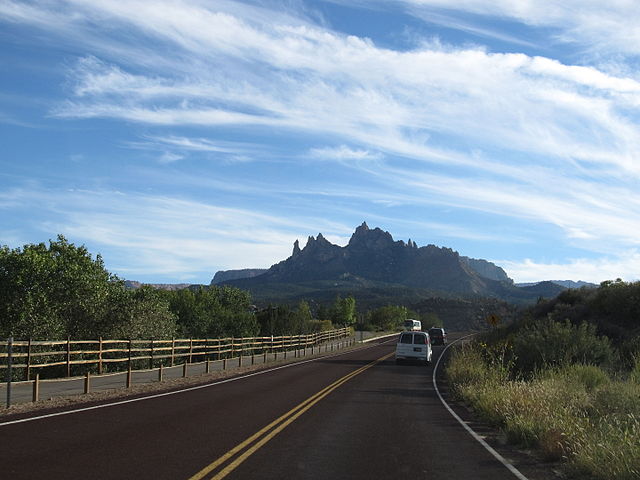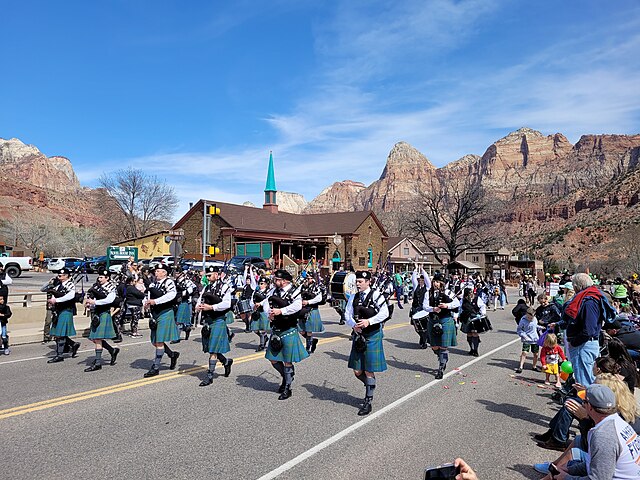Are you planning a trip to Springdale or considering making this charming city your new home? Understanding the local weather patterns is absolutely crucial for making the most of your experience. Springdale’s climate offers a fascinating blend of seasonal variations that can significantly impact your daily activities, travel plans, and overall quality of life.
Weather plays a pivotal role in shaping our decisions, from what clothes to pack for a weekend getaway to determining the best time to visit local attractions. In this comprehensive guide, we’ll dive deep into everything you need to know about Springdale weather, helping you navigate each season like a local expert.
Understanding Springdale’s Unique Climate Patterns
Springdale experiences a distinctive climate that sets it apart from many other destinations. The city’s weather patterns are influenced by several geographical and meteorological factors that create a unique atmospheric environment throughout the year.
Geographic Influences on Local Weather
The geographic location of Springdale plays a fundamental role in shaping its weather characteristics. Nestled in a region where different air masses frequently collide, the city experiences dynamic weather changes that keep residents and visitors on their toes.
Mountain ranges and bodies of water in the surrounding area create microclimates that can cause temperature variations within just a few miles. This geographic diversity means that weather conditions can change rapidly, making local forecasting both challenging and essential for daily planning.
The elevation changes throughout the Springdale area also contribute to temperature differences. Higher elevations typically experience cooler temperatures and increased precipitation, while lower areas may enjoy warmer conditions and different wind patterns.
Seasonal Temperature Variations
Springdale’s temperature profile follows a classic four-season pattern, but with some unique characteristics that distinguish it from other regions. The annual temperature range spans from comfortable mild periods to more extreme seasonal conditions.
Summer temperatures typically reach their peak in July and August, when residents can expect warm to hot conditions. However, the city’s geographic position helps moderate extreme heat, making summers more bearable than in many other locations at similar latitudes.
Winter temperatures can drop significantly, creating opportunities for winter sports and activities while also requiring proper preparation for cold weather conditions. The shoulder seasons of spring and fall offer some of the most pleasant weather conditions, with moderate temperatures and generally favorable conditions for outdoor activities.
Spring Weather in Springdale: What to Expect

Spring in Springdale is truly a magical time, as the city awakens from winter’s grip and transforms into a vibrant landscape of blooming flowers and renewed energy. This season brings some of the most variable weather conditions of the year, making it both exciting and unpredictable.
March Weather Conditions
March marks the beginning of Springdale’s transition from winter to spring, though don’t be surprised if winter makes a few final appearances. Early March often still carries the chill of winter, with temperatures that can fluctuate dramatically from day to day.
Average temperatures in March typically range from the mid-30s to low-50s Fahrenheit, though sudden warm spells can push temperatures into the 60s, while late winter storms can bring temperatures back down to freezing. This variability makes March one of the most unpredictable months for weather planning.
Precipitation during March comes in various forms, from late-season snow to early spring rain showers. The combination of changing temperatures and varying moisture levels creates conditions that can shift from sunny and mild to cold and stormy within hours.
April Temperature Trends
April represents the heart of spring weather in Springdale, when the city truly begins to shake off winter’s influence. This month typically brings more consistent warming trends, though spring weather patterns can still surprise you with unexpected variations.
Temperature ranges in April usually span from the mid-40s to upper-60s Fahrenheit, creating ideal conditions for outdoor activities and spring cleaning projects. The increasing daylight hours and warming soil temperatures trigger the region’s spectacular spring bloom.
Rainfall becomes more common in April, as spring storm systems move through the region. These storms are generally less severe than summer thunderstorms but can still bring significant precipitation that helps green up the landscape after winter dormancy.
May Climate Characteristics
May often stands out as one of the most pleasant months in Springdale’s weather calendar. The combination of comfortable temperatures, increasing sunshine, and manageable humidity levels makes it a favorite time for locals and visitors alike.
Temperatures in May typically range from the mid-50s to mid-70s Fahrenheit, creating perfect conditions for hiking, gardening, and outdoor festivals. The threat of frost generally ends by mid-May, allowing gardeners to safely plant sensitive crops and flowers.
Late spring storms can still occur in May, but they’re often accompanied by the dramatic beauty of spring thunderstorms that help maintain the region’s water supply while providing spectacular displays of nature’s power.
Summer Heat and Humidity in Springdale
Summer in Springdale brings the year’s warmest weather, transforming the city into a vibrant hub of outdoor activities and summer festivals. While temperatures rise significantly, the region’s geographic characteristics help moderate the most extreme heat.
June Weather Patterns
June marks the official beginning of summer weather patterns in Springdale, though the transition from spring can sometimes extend well into the month. Early June often maintains some of spring’s mild characteristics before giving way to true summer conditions.
Average temperatures in June typically range from the mid-60s to upper-70s Fahrenheit, making it an excellent month for camping, hiking, and water activities. The longer daylight hours provide extended opportunities for outdoor recreation and evening activities.
Humidity levels begin to increase in June, though they generally remain more comfortable than in peak summer months. Afternoon thunderstorms become more common, often providing welcome relief from building heat and helping to maintain the region’s lush vegetation.
July Peak Summer Conditions
July represents the peak of summer weather in Springdale, bringing the year’s highest temperatures and most intense heat. This month tests the limits of both residents and visitors, requiring careful planning for outdoor activities and proper hydration strategies.
Daytime temperatures in July frequently reach into the 80s and occasionally push into the 90s Fahrenheit, while nighttime temperatures rarely drop below the 60s. The combination of heat and increased humidity can make conditions feel even warmer than actual temperatures indicate.
Summer thunderstorms reach their peak activity in July, often developing rapidly in the afternoon and evening hours. These storms can bring heavy rainfall, strong winds, and occasionally hail, though they also provide crucial relief from heat and help replenish water supplies.
August Late Summer Climate
August continues the summer heat pattern established in July, though subtle signs of the approaching fall season may begin to appear toward the month’s end. This month often brings some of the most challenging weather conditions of the year for outdoor activities.
Temperature patterns in August closely mirror those of July, with hot days and warm nights creating conditions that require careful attention to heat-related health concerns. Air conditioning becomes essential for comfort and safety during peak heat periods.
Late August sometimes brings the first hints of changing seasons, with slightly earlier sunsets and occasional cooler mornings that provide preview glimpses of the coming fall weather patterns.
Fall Weather Transitions in Springdale

Fall in Springdale offers some of the most spectacular weather of the year, as summer’s heat gives way to crisp, comfortable conditions perfect for outdoor adventures and seasonal activities. This season brings dramatic changes in both temperature and scenery.
September Cool Down
September marks the beginning of Springdale’s autumn transformation, as summer heat gradually retreats and more comfortable conditions take hold. This month often provides some of the year’s most pleasant weather for outdoor activities and travel.
Early September may still carry summer’s warmth, with temperatures ranging from the upper-60s to low-80s Fahrenheit. However, as the month progresses, cooler morning temperatures and more comfortable afternoon conditions become increasingly common.
The changing angle of sunlight and decreasing daylight hours trigger the region’s famous fall color display, though peak colors typically don’t arrive until later in the season. September’s weather patterns create ideal conditions for hiking and photography as the landscape begins its autumn transformation.
October Color Season
October stands as the crown jewel of Springdale’s weather calendar, combining comfortable temperatures with the region’s spectacular fall foliage display. This month draws visitors from around the world who come to experience the perfect combination of ideal weather and natural beauty.
Temperature ranges in October typically span from the mid-40s to upper-60s Fahrenheit, creating perfect conditions for fall festivals, apple picking, and leaf-viewing expeditions. Cool mornings and warm afternoons provide ideal comfort levels for extended outdoor activities.
The month’s weather patterns support the peak fall color season, with sunny days and cool nights intensifying the brilliant reds, oranges, and yellows that transform the landscape into a natural masterpiece.
November Winter Preparation
November serves as Springdale’s transition month from fall to winter, bringing cooler temperatures and the first hints of the approaching cold season. Weather patterns become more variable as different air masses begin to assert their influence.
Temperatures in November typically range from the mid-30s to mid-50s Fahrenheit, with occasional warm spells providing last glimpses of mild weather before winter’s arrival. The month’s end often brings the first frost events that signal the definitive end of the growing season.
Precipitation patterns in November can vary significantly, from gentle fall rains to the season’s first snow flurries. This variability requires residents and visitors to be prepared for rapidly changing conditions.
Winter Weather Challenges in Springdale
Winter in Springdale presents unique challenges and opportunities, as cold temperatures and potential snow create conditions that require preparation and planning. However, the season also offers distinctive recreational opportunities and scenic beauty.
December Holiday Weather
December brings the official start of winter weather to Springdale, though conditions can vary significantly from year to year. Holiday weather patterns often influence travel plans and outdoor celebration activities.
Temperature ranges in December typically span from the mid-20s to mid-40s Fahrenheit, creating genuine winter conditions that may include snow, ice, and extended periods of freezing temperatures. The month’s weather can significantly impact holiday travel and outdoor activities.
Winter storm systems become more frequent in December, potentially bringing significant snow accumulations and creating hazardous travel conditions. However, these same storms contribute to the region’s winter beauty and recreational opportunities.
January Deep Winter
January represents the heart of Springdale’s winter season, bringing the year’s coldest temperatures and most challenging weather conditions. This month tests both infrastructure and human adaptation to winter weather extremes.
Average temperatures in January typically range from the teens to upper-30s Fahrenheit, with occasional arctic outbreaks pushing temperatures well below zero. Extended cold periods can create frozen precipitation and hazardous travel conditions.
Snowfall patterns in January can vary dramatically from year to year, with some seasons bringing heavy accumulations while others remain relatively snow-free. The month’s weather patterns significantly influence winter recreation opportunities and energy consumption patterns.
February Late Winter Patterns
February continues winter’s grip on Springdale while occasionally providing hints of the approaching spring season. This month often brings some of winter’s most unpredictable weather patterns, combining continued cold with increasing daylight.
Temperature variations in February can be extreme, with bitter cold snaps followed by sudden warm spells that provide false glimpses of spring. These temperature swings can create hazardous ice conditions and make daily planning challenging.
Late February sometimes brings the winter season’s most significant storm events, as weather patterns begin the slow transition toward spring conditions. However, residents know that winter weather can extend well into March.
Extreme Weather Events and Preparedness
Springdale’s location exposes it to various extreme weather events throughout the year, making emergency preparedness an essential consideration for residents and visitors. Understanding potential weather hazards helps ensure safety and minimize disruption.
Severe Storm Seasons
Severe weather in Springdale typically peaks during the spring and summer months, when atmospheric conditions favor the development of strong thunderstorms, tornadoes, and damaging wind events. These storms can develop rapidly and create dangerous conditions.
Spring storms often bring the greatest tornado risk, as temperature contrasts between air masses create the instability necessary for severe weather development. Residents should maintain awareness of weather conditions during peak storm seasons and have emergency plans in place.
Summer storms, while often less severe than spring systems, can still produce damaging hail, flooding rains, and strong winds capable of causing property damage and power outages. Heat-related health emergencies also become concerns during extreme summer weather.
Emergency Weather Planning
Effective emergency weather planning requires understanding the specific hazards that threaten Springdale throughout the year and developing appropriate response strategies. Every household should maintain emergency supplies and communication plans.
Winter weather preparedness focuses on maintaining heating capabilities, food and water supplies, and transportation alternatives during extended cold periods or snow events. Power outages during winter storms can create life-threatening situations without proper preparation.
Year-round emergency planning should include reliable weather information sources, emergency supply kits, and family communication plans that account for various weather scenarios. Modern technology provides excellent resources for weather monitoring and emergency communication.
Best Times to Visit Springdale Based on Weather

Choosing the optimal time to visit Springdale depends largely on your weather preferences and planned activities. Each season offers unique advantages and potential challenges that should influence your travel timing decisions.
Outdoor Activity Recommendations
Spring and fall generally provide the most comfortable weather conditions for outdoor activities in Springdale, with moderate temperatures and generally favorable precipitation patterns. These seasons offer excellent conditions for hiking, camping, and sightseeing.
Summer weather supports water-based activities and extended daylight recreation, though heat management becomes crucial during peak temperature periods. Early morning and evening activities often provide the most comfortable summer recreation opportunities.
Winter weather creates unique recreational opportunities for cold-weather enthusiasts, though appropriate clothing and safety preparations become essential. Winter sports and activities can provide memorable experiences for properly prepared visitors.
Travel Planning Considerations
Weather patterns should significantly influence travel planning for Springdale visits, particularly regarding accommodation availability and transportation reliability. Peak weather seasons often correspond with increased tourist activity and higher costs.
Spring and fall weather can be variable, requiring flexible packing strategies and backup indoor activity plans. However, these seasons often provide the most rewarding combination of comfortable conditions and natural beauty.
Winter travel requires additional preparation for potential weather delays and cancellations, though it also offers opportunities to experience Springdale’s winter character without summer crowds.
Local Weather Resources and Forecasting
Staying informed about Springdale weather conditions requires access to reliable, up-to-date information sources that provide both current conditions and accurate forecasts. Modern technology offers numerous options for weather monitoring.
Reliable Weather Services
The National Weather Service provides the most authoritative weather information for Springdale, offering detailed forecasts, watches, warnings, and climate data. Their forecasts incorporate local knowledge and specialized meteorological expertise.
Local television and radio stations often provide valuable regional weather information that incorporates local geographic knowledge and community-specific concerns. These sources frequently offer extended forecasts and special weather programming during significant events.
Private weather services and apps can provide additional perspectives and specialized features, though their accuracy may vary. Comparing multiple sources often provides the most comprehensive understanding of expected conditions.
Mobile Apps for Springdale Weather
Smartphone weather applications offer convenient access to current conditions and forecasts, with many providing location-specific information and customizable alert systems. These apps can be particularly valuable for outdoor activity planning.
Radar applications allow users to track precipitation patterns and storm movements in real-time, providing valuable information for travel and activity planning. However, interpreting radar data requires some basic meteorological understanding.
Specialized apps for specific activities, such as hiking or agriculture, often incorporate weather data with activity-specific recommendations and safety information.
Climate Change Impact on Springdale Weather
Long-term climate trends are gradually influencing Springdale’s weather patterns, with changes in temperature ranges, precipitation patterns, and extreme event frequency becoming increasingly apparent over extended time periods.
Historical weather data shows subtle but measurable changes in average temperatures, precipitation timing, and seasonal patterns over recent decades. These changes influence everything from agricultural practices to energy consumption patterns.
Future climate projections suggest continued changes in Springdale’s weather patterns, with potential impacts on local ecosystems, agricultural practices, and recreational opportunities. Understanding these trends helps inform long-term planning decisions.
Climate adaptation strategies are becoming increasingly important for both individual and community planning, as changing weather patterns create new challenges and opportunities for Springdale residents and visitors.
Conclusion
Springdale’s weather offers a dynamic and engaging climate that changes dramatically throughout the year, creating unique opportunities and challenges for residents and visitors alike. From spring’s renewal and summer’s warmth to fall’s spectacular colors and winter’s crisp beauty, each season brings its own character and weather patterns that shape life in this remarkable city.
Understanding these weather patterns empowers you to make informed decisions about travel timing, activity planning, and daily preparations. Whether you’re planning a weekend visit or considering a permanent move to Springdale, this comprehensive weather knowledge will help you make the most of what this wonderful city has to offer.
The key to enjoying Springdale’s weather lies in preparation, flexibility, and appreciation for the natural cycles that create such diverse and beautiful conditions throughout the year. By staying informed about current conditions and long-term patterns, you can safely enjoy all that Springdale’s varied climate has to offer.
Frequently Asked Questions
Q1: What is the best month to visit Springdale for ideal weather conditions?
October typically offers the best combination of comfortable temperatures, low humidity, and spectacular fall colors, making it the most popular month for visitors seeking ideal weather conditions.
Q2: How much snow does Springdale typically receive during winter months?
Springdale’s annual snowfall varies significantly from year to year, but typically ranges from 15-30 inches, with the heaviest accumulations usually occurring in January and February.
Q3: Are severe thunderstorms common in Springdale during summer?
Yes, Springdale experiences regular thunderstorm activity during summer months, particularly in July and August, though most storms are brief and provide beneficial cooling and precipitation.
Q4: What should I pack for a spring visit to Springdale?
Spring visitors should pack layers, including warm clothing for cool mornings and lighter options for warmer afternoons, plus rain gear for frequent spring showers.
Q5: How reliable are weather forecasts for Springdale?
Weather forecasts for Springdale are generally reliable for 3-5 days ahead, though the region’s variable climate can make longer-range predictions less accurate, especially during transitional seasons.

